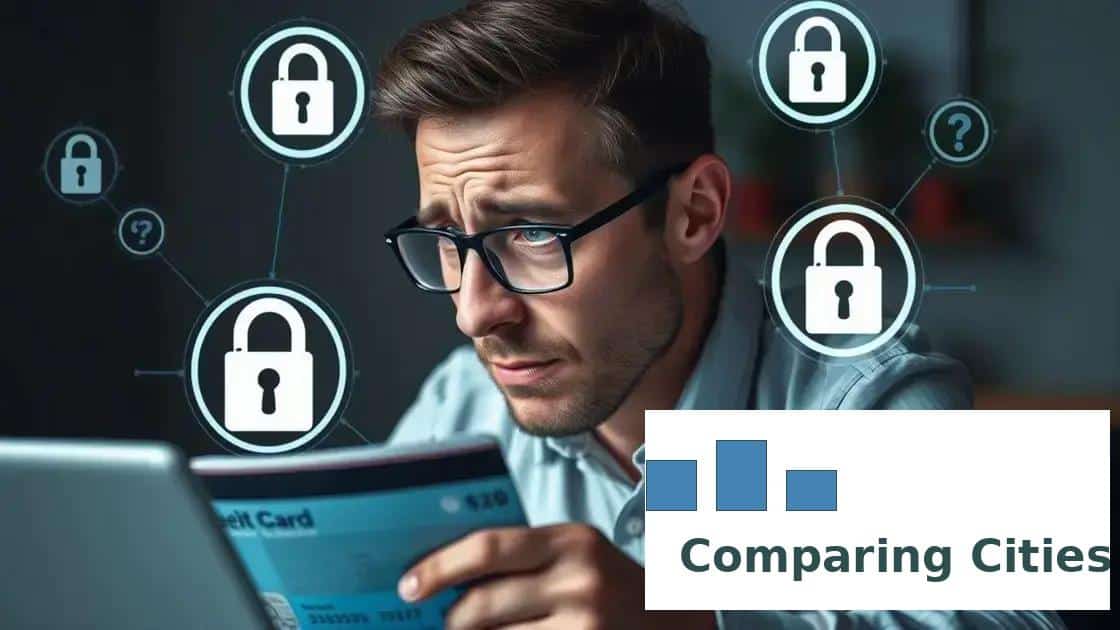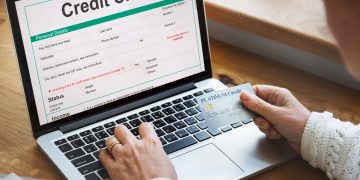Credit card fraud prevention: Outsmart the scammers

Credit card fraud prevention isn’t just about playing defense, it’s about staying one step ahead.
Ever checked your statement and felt a chill from an unfamiliar charge? Let’s dive into how you can lock down your finances with smart strategies and cutting-edge tech.
Understanding credit card fraud
Credit card fraud prevention starts with knowing the enemy. As online shopping surges, so do scams targeting your card details. Understanding the tricks fraudsters use empowers you to shield your money.
Fraud often strikes through stolen data or sneaky online tactics. Criminals exploit weak security to swipe card numbers or hack accounts. Awareness is your first line of defense against these threats.
By learning how fraud happens, you can spot risks early. Stay curious about your account activity and question anything that feels off. Knowledge is power in keeping your finances safe.
Types of credit card fraud
Credit card fraud prevention hinges on recognizing fraud’s many faces. Scammers use varied tactics, but knowing their playbook helps you stay secure. Here are the main types to watch for.
Card-Not-Present Fraud: Thieves use stolen card details for online purchases without the physical card. It’s common in e-commerce, where security gaps can be exploited. Always shop on trusted sites.
Account Takeover: Fraudsters hijack your account, altering details like billing addresses. Lost or Stolen Cards: A misplaced card can be a thief’s ticket to unauthorized purchases.
Counterfeit Cards: Scammers craft fake cards to mimic real ones, slipping through unchecked systems. Stay proactive, check statements regularly and report oddities fast. Quick action and vigilance are key to stopping fraud before it spirals.
How fraudsters operate
Credit card fraud prevention means understanding the cunning ways scammers work. They use phishing emails, fake websites, or even phone scams to steal your data. These traps often look shockingly real.
Social engineering is a favorite trick, fraudsters pose as trusted sources to coax out your details. Unsolicited calls or emails asking for card info should raise red flags. Always verify before sharing.
Protect yourself by staying skeptical and securing your accounts. Unique passwords and regular monitoring can foil even the slickest fraudster’s plans.
Common signs of fraud to watch out for
Identifying common signs of fraud can help you protect your finances. Awareness is your best defense against credit card fraud.
Many people overlook red flags until it’s too late. Credit card fraud prevention relies on spotting trouble early. Small clues can signal big problems if ignored. Stay sharp to protect your hard-earned money.
Unusual transactions
Unfamiliar charges on your statement? That’s a red alert for credit card fraud prevention. Small, odd purchases or transactions from strange locations often hint at trouble. Check your accounts daily.
Fraudsters may test cards with tiny charges before going big. Multiple rapid transactions or purchases from far-off places are warning signs. Set up bank alerts for real-time updates.
Acting fast can stop fraud in its tracks. If something looks wrong, contact your bank immediately to investigate and secure your account.
Changes to your account
Unexpected account changes, like a new billing address, scream potential fraud. Credit card fraud prevention means watching for unauthorized tweaks to your profile. Monitor your account settings closely.
Phishing scams often trick you into updating details on fake sites. If your card stops working or you get odd notifications, don’t wait, reach out to your bank. Quick checks save headaches.
Regularly log in to verify your account details. If anything’s off, report it instantly to keep scammers from gaining more control.
Effective strategies for prevention
Credit card fraud prevention is about proactive steps to lock down your finances. Simple habits and smart choices can make you a tough target. Let’s explore how to stay safe.
Use strong passwords
Strong passwords are your first shield in credit card fraud prevention. Use at least 12 characters, mixing letters, numbers, and symbols. Avoid obvious choices like birthdays or pet names.
Password managers can generate and store complex codes securely. Enable two-factor authentication (2FA) for extra protection. Change passwords every few months to stay ahead.
Weak passwords invite trouble. Make yours tough to crack, and you’ll deter hackers from targeting your accounts.
Regularly monitor your accounts
Monitoring your accounts is a cornerstone of credit card fraud prevention. Check statements weekly for anything unusual. Catching odd charges early limits damage.
Set up bank alerts for transactions over a set amount or account changes. These instant notifications help you react fast. Most banks offer free, easy-to-use alert systems.
Make account checks a habit, like brushing your teeth. Quick reviews can spot fraud before it drains your wallet.
Shop securely online
Safe online shopping is critical for credit card fraud prevention. Stick to sites with “https://” and a padlock icon signs of encryption. Avoid public Wi-Fi for purchases; it’s a hacker’s playground.
Shop only with reputable retailers, and be wary of deals that seem too good. Fraudsters love luring victims with fake discounts. Double-check URLs for typos or odd extensions.
Secure sites and cautious habits keep your card details safe. Trust your gut, if a site feels off, don’t risk it.
How technology plays a role in fraud prevention
Technology plays a crucial role in fraud prevention, shaping how we protect our financial information. Innovations in technology have made it easier to detect and prevent fraudulent activities.
Credit card fraud prevention leans heavily on tech to stay ahead of scammers. From AI to encryption, modern tools are your allies. Here’s how they protect your finances.
Real-time monitoring
Real-time monitoring is a game-changer for credit card fraud prevention. Banks use advanced algorithms to track transactions instantly. Unusual activity, like a sudden overseas purchase, triggers alerts.
These systems learn your spending habits, flagging anything out of the ordinary. You’ll get texts or emails about suspicious charges, letting you act fast. It’s like a digital guard dog.
Machine learning keeps improving detection, catching fraudsters before they do serious damage. Stay enrolled in your bank’s monitoring services for maximum protection.
Secure payment gateways
Secure payment gateways are another essential aspect of technology in fraud prevention. These systems encrypt sensitive information during transactions, making it nearly impossible for fraudsters to intercept credit card details.
Many online retailers now utilize tokenization, which replaces sensitive data with unique identification symbols. This means that even if the data is intercepted, it is useless without access to the encryption keys.
Using secure platforms also builds trust with consumers, as they can shop confidently knowing their information is protected.
Biometric verification
Biometric technology is becoming increasingly common for safeguarding accounts. Features like fingerprint scanning and facial recognition offer an extra layer of security.
This technology ensures that even if someone gets access to your password, they would still need your unique biometric features to complete transactions or access accounts.
Biometric verification is a simple yet powerful way to deter fraud.

What to do if you’re a victim of fraud
If you suspect that you’ve become a victim of credit card fraud, taking immediate action is crucial. Keeping calm helps you respond effectively to the situation, ensuring your finances are protected.
If credit card fraud hits, quick action is your best defense. Credit card fraud prevention also means knowing how to respond.
Contact your bank
Call your bank the moment you suspect fraud, it’s priority one for credit card fraud prevention. Report suspicious charges, even small ones, to freeze your account. This stops scammers in their tracks.
Request a new card with a fresh number to cut off further access. Ask about additional security options, like fraud alerts. Banks are usually quick to help.
Fast reporting minimizes losses. Don’t hesitate, every minute counts when fraud is at play.
Review transactions
Dig into your recent transactions to gauge the fraud’s scope. Credit card fraud prevention includes spotting every unauthorized charge. Check statements, receipts, and email alerts thoroughly.
Look for patterns, like small test charges or unfamiliar vendors. Document everything for your bank’s investigation. This helps build a clear case.
Regular reviews catch what you might miss at first glance. Stay thorough to protect your finances.
File a fraud report
Filing a fraud report strengthens your credit card fraud prevention efforts. Contact local authorities to document the crime, it may help with disputes. Keep records of all communications.
Report to the Federal Trade Commission at IdentityTheft.gov for guidance and resources. They’ll walk you through recovery steps. It’s a simple but crucial move.
Official reports create a paper trail, which can be vital for resolving issues and proving fraud later.
Monitor your accounts
Post-fraud, keep a sharp eye on your accounts. Credit card fraud prevention doesn’t end after one incident. Check statements daily for new suspicious activity.
Sign up for credit monitoring services for extra vigilance. They alert you to changes in your credit report. Many are affordable or even free through your bank.
Ongoing monitoring ensures you catch any lingering threats. Stay proactive to keep your finances secure.
Credit card fraud prevention is your shield in a digital world full of risks. By staying vigilant, using smart tech, and acting fast, you can keep scammers at bay.
Protect your money with these strategies and rest easier knowing you’re in control.
FAQ – Frequently Asked Questions about Credit Card Fraud Prevention
What should I do if I notice a fraudulent charge?
Contact your bank immediately to report the fraudulent transaction and ask them to freeze your account.
How can I protect my credit card from fraud?
Use strong passwords, monitor your accounts regularly, and utilize secure payment gateways.
What are common signs of credit card fraud?
Look for unusual transactions, unauthorized changes to your account, and unexpected account access issues.
Can technology help prevent credit card fraud?
Yes, technology plays a vital role through real-time monitoring, secure payment systems, and biometric verification methods.






